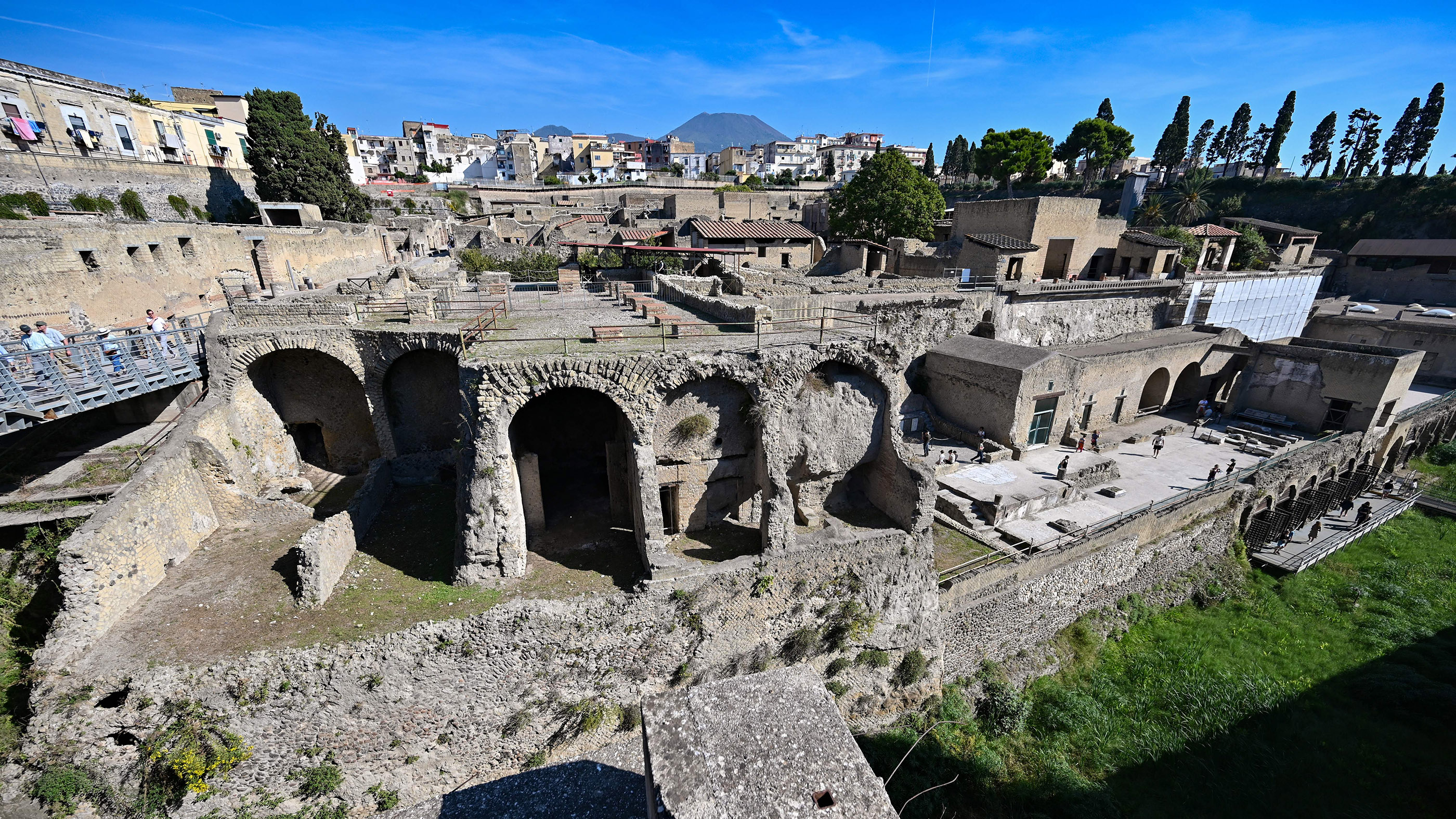Skeleton of man fleeing Mount Vesuvius eruption found in Herculaneum
The skeleton is the first Vesuvius victim to be found in a quarter of a century.

The bones of a man who was unable to escape the eruption of Mount Vesuvius in A.D. 79 have been found in the ancient Roman town of Herculaneum.
The skeletal remains were discovered near a stone wall along the ancient seafront, the first discovery of a Vesuvius victim in Herculaneum in 25 years, according to the Italian news outlet ANSA. The bones belonged to a man in his early 40s. He may have died in the final phase of the eruption, when gas and ash called pyroclastic flow rushed through the town at more than 60 mph (100 km/h). The flow was around 930 degrees Fahrenheit (500 degrees Celsius), excavation director Francesco Sirano told ANSA.
"The last moments here were instant, but terrible," Sirano said.
The town of Herculaneum sat between Vesuvius and the sea, closer to the volcano than the more famous Pompeii. As Mount Vesuvius began to rumble and belch, residents of Herculaneum began to evacuate. Many ended up on the beach, awaiting rescue by sea. In the 1980s and 1990s, archaeologists discovered hundreds of skeletons huddled in boatsheds along the shoreline. People had apparently been sheltering in the sheds when the volcano went into its final paroxysms, sending an avalanche of pyroclastic flow through the city. There is debate among experts as to how, and how quickly, most victims died, Live Science previously reported. Heat, suffocating ash and trauma were among the gruesome possibilities on the menu.
Related: Photos: The bones of Mount Vesuvius
The new victim wasn't one of those sheltering in the sheds. Instead, he was out on the beach, near the town's lava rock seawall, the researchers said. Researchers found the skeleton with its head toward the sea and surrounded by carbonized wood, according to the dig's archaeologists. A large roof beam found near the body may have crushed the man's skull.
It's not clear who the man was or what he was doing when he died. He may have been a town resident who left a shelter to look for a rescue boat, only to be caught up in the devastating last moments of the eruption. Or he may have been a soldier with the rescue effort who ended up stranded among those he was trying to save.
Sign up for the Live Science daily newsletter now
Get the world’s most fascinating discoveries delivered straight to your inbox.
The archaeological team now plans to remove the chunk of hardened ash that encases the victim's body and then excavate the skeleton in a laboratory environment. Fragments of metal and fabric near the skeleton may be a bag holding tools, weapons or coins, according to ANSA. Investigating the contents of the bag could yield hints to the man's identity and what he valued as he tried to flee for his life.
Originally published on Live Science

Stephanie Pappas is a contributing writer for Live Science, covering topics ranging from geoscience to archaeology to the human brain and behavior. She was previously a senior writer for Live Science but is now a freelancer based in Denver, Colorado, and regularly contributes to Scientific American and The Monitor, the monthly magazine of the American Psychological Association. Stephanie received a bachelor's degree in psychology from the University of South Carolina and a graduate certificate in science communication from the University of California, Santa Cruz.









